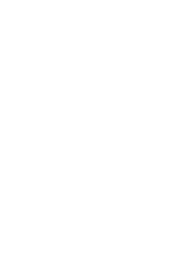 |
 |
 |

|
Patterned glass after cutting in blades
Photo: Fenestra Ateliers
|
|
 |
THE TECHNIQUE OF PATTERNED GLASS
Under the name 'decorated glass', there are different kinds of glass available in clear and coloured variations. This Patterned Glass (Verres Imprimés, Figuurglas, Gussgläser, Vetri Stampati, Vidrios Colados) is still produced at the glass factory of Roux, Belgium.
|

|
Posted 7 February 2015
|
Share this:
|
|
|
|
|
|
|
|
|
|
PATTERNED GLASS
Angela van der Burght
Under the name 'decorated glass', there are different kinds of glass available in clear and coloured variations. This Patterned Glass (Verres Imprimés, Figuurglas, Gussgläser, Vetri Stampati, Vidrios Colados) is still produced at the glass factory of Roux, Belgium. This factory -which is now part of Glaverbel- was established and made operational in 1890 by the Société des Glaces of Charleroi. Ideally situated on the riverside for the transport of the raw materials and near the main roads around Charleroi in a typical, drowsy Walloon town. For a long time the factory produced plate glass but from 1929 it gradually went over to the production of figured and wired glass. Through the years the production became more modernized, so they changed from pot-furnaces to tank-furnaces and from glass furnaces with a thermic inertia to a band-cooling oven for continuous annealing. The newest oven was made in 1986 and served two production lines. The factory gave employment to 250 workers and produced 240 tons of patterned glass a day in 30 different designs, three colours, frosted or reinforced.
The ‘beating heart’ of the factory is a place where a computer controls and watches the production process. All information of importance like raw materials, the blend, the fusing and the glass level in the oven, the rolling and the tempering come in here and can be seen on a monitor. Here is also the control of air, water, fuel and the glass waste unit. From a special storage unit, the raw materials sand (from Lommel, B), dolomite, limestone, sodium and flat glass cullet are brought straight to the air tunnel above the oven by a conveyor belt. If yellow or bronze coloured glass is made, its raw materials are mixed here. The materials are blended dry and moistened afterwards with water and steam. The filling installation shovels this blend into the oven in a continuous process 24 hours a day, 7 days a week, 365 days a year. Here, 500 tons of fused glass will be homogenized and degassed. At the refining zone the glass is purified rapidly by injecting air bubbles. Now the red-glowing glass flows to the bottom of the oven and via a channel and two basins is brought to the press rolls. Two rolls start the cooling down. The hot glass is pressed between a plain upper forming roll and a lower engraved forming roll: so one side will be flat, the other one patterned roller imprint. Only 10% of the production has a pattern on both sides. The metal calanders start cooling down by water, so they will not get hotter than 600 degrees Celsius, a point at which the glass would stick on the metal. Above the rolls a metallic wire netting can run parallel, pressed into the glass to obtain reinforcement. After the pressing the glass is still easily deformable, only the pattern is already fixed at this stage. For the tempering, the two glass ribbons pass through belt cooling ovens until they reach room temperature. A good and gradual cooling down guarantees a homogeneous and constant quality, so that it will not break during transport and the softer glass can be cut more easily. When cooled to room temperature the glass ribbons are cut automatically to the right size, after being treated with the anti-irisation product Iristop. It makes the glass more durable and gives protection against moisture. After being cut and broken into the required length and width there will be a last inspection before the glass sheets are packed into crates and brought into the storage room.
If a customer has ordered a certain design in a frosted version, then the glass passes through a sandblasting cabin. Automatically provided with a mask in the hollow parts of the design, the ends are sand blasted, washed and dried. From the total production 70% goes to the market in The Netherlands, Germany, Great Britain and Italy. Besides at Roux, Glaverbel has another patterned glass factory at Barevka (CZ) that takes care of the production for the East-European countries. Finally patterned glass goes to the glass suppliers’ and wholesale trade. There, under the name Imagine, different designs like Delta, Chinchilla, Niagara, Antique, Flutes, Gothic, Maya, Screen or Cathedral in different thicknesses can be selected. A beautiful product for glass artists, architects and interior decorators that want new designs and applications.
This article was published in This Side Up! in 1998
Angela van der Burght
|
|
|
|
|
|
|